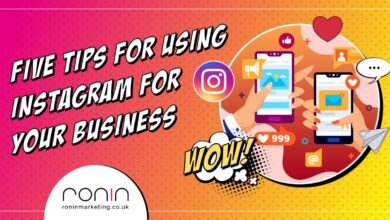Getting It On With YouTube A Creators Guide
Getting it on with YouTube – it sounds a little cheeky, right? But seriously, conquering the YouTube landscape requires strategy, creativity, and a whole lot of hustle. This isn’t just about uploading videos; it’s about building a community, understanding the platform’s intricacies, and crafting content that resonates. We’ll dive deep into YouTube’s monetization policies, explore proven strategies for channel growth, and uncover the secrets to creating engaging videos that keep viewers coming back for more.
Get ready to learn how to truly make your mark on YouTube!
From understanding YouTube’s Partner Program and its various monetization avenues (ads, sponsorships, channel memberships – we’ll break them all down!) to mastering the art of content creation and audience engagement, this guide provides a comprehensive roadmap to YouTube success. We’ll cover everything from choosing the right niche and creating a killer content calendar to analyzing your analytics and optimizing your videos for maximum impact.
Think of this as your ultimate cheat sheet to becoming a YouTube powerhouse.
Understanding YouTube’s Monetization Policies
So you’ve got a great YouTube channel and you’re ready to start earning some money. That’s fantastic! But before you start dreaming of beach vacations funded by ad revenue, it’s crucial to understand YouTube’s monetization policies and the requirements for joining their Partner Program. This post will break down the key aspects to help you navigate the process successfully.
YouTube Partner Program Requirements
To become a YouTube partner and access monetization features, you need to meet several criteria. First, you must have at least 1,000 subscribers. Secondly, you need to have accumulated at least 4,000 valid public watch hours within the past 12 months. Finally, you must adhere to YouTube’s monetization policies, which cover everything from copyright to community guidelines.
Meeting these requirements demonstrates to YouTube that your channel has a dedicated audience and produces content that aligns with their platform standards. Failure to comply with these policies can lead to demonetization or even channel termination.
Methods for Earning Money on YouTube
YouTube offers several avenues for monetization. The most common is through ad revenue. When viewers watch ads on your videos, you earn a portion of the revenue. Another popular method is channel memberships, where viewers pay a recurring fee for exclusive perks, such as badges, emojis, and members-only content. Sponsorships are also a significant income source, involving collaborations with brands to promote their products or services within your videos.
Finally, Super Chat and Super Stickers allow viewers to pay to have their messages highlighted during live streams. Each method presents unique opportunities and challenges, requiring different levels of audience engagement and brand partnerships.
Applying for the YouTube Partner Program
Once you’ve met the subscriber and watch time requirements, you can apply for the YouTube Partner Program (YPP) directly through your YouTube Studio. The application process involves reviewing and accepting YouTube’s monetization policies, linking an AdSense account (necessary for receiving payments), and providing additional information about your channel. YouTube will review your application, and if approved, you can begin monetizing your videos.
Remember, maintaining compliance with their policies is crucial for continued monetization eligibility.
Successful Monetization Strategies
Many successful YouTubers employ a multi-pronged approach to monetization. For instance, MrBeast, known for his extravagant stunts and philanthropy, leverages ad revenue, sponsorships from major brands, and merchandise sales to generate substantial income. Others, like educational channels like Crash Course, might focus on channel memberships and sponsorships aligned with their educational content. The key is to find a strategy that aligns with your content, audience, and brand identity.
Consistency in uploading high-quality content and engaging with your audience are essential components of any successful monetization strategy.
Comparison of YouTube Monetization Methods
| Monetization Method | Revenue Potential | Effort Required | Audience Engagement Needed |
|---|---|---|---|
| Ad Revenue | Moderate to High (dependent on views and ad engagement) | Low (once set up) | Moderate (high viewership needed) |
| Sponsorships | High (dependent on brand deals) | Medium to High (requires outreach and negotiation) | High (strong brand alignment and audience trust needed) |
| Channel Memberships | Moderate to High (dependent on member count and pricing) | Medium (requires creating member-exclusive content) | High (requires strong community engagement) |
| Super Chat/Stickers | Low to Moderate (dependent on live stream viewership and engagement) | Low | High (requires interactive live streams) |
Building a Successful YouTube Channel
Launching a successful YouTube channel requires a strategic approach, combining creative content with effective marketing techniques. It’s not just about uploading videos; it’s about building a community and providing value to your audience. Consistency, planning, and a clear understanding of your niche are key ingredients for growth.
Creating a YouTube Channel
Setting up your YouTube channel is the first step towards sharing your content with the world. Begin by creating a Google account if you don’t already have one, as this is the foundation for your YouTube presence. Next, access YouTube and click on your profile icon. Select “Create a channel” and follow the on-screen instructions. Choose a channel name that accurately reflects your content and is easy to remember.
Upload a visually appealing channel art image and a profile picture that represents your brand. Remember to write a concise and informative channel description highlighting your content’s focus. Finally, customize your channel layout to create a professional and user-friendly experience for viewers.
Niche Selection and Target Audience
Identifying your niche and target audience is crucial for channel success. A well-defined niche allows you to focus your content creation efforts, attract a dedicated audience, and build a strong brand identity. For example, instead of focusing broadly on “gaming,” you might choose a niche like “retro arcade game reviews” or “speedrunning indie titles.” Understanding your target audience – their demographics, interests, and viewing habits – allows you to tailor your content to resonate with them.
This involves considering factors such as age, location, and online behavior. By understanding your audience, you can create content that speaks directly to their needs and preferences.
Content Calendar for Consistent Uploads
A content calendar is essential for maintaining a consistent upload schedule. This helps you plan your video topics, production timelines, and promotion strategies. A simple spreadsheet can be used to track planned uploads, including titles, descriptions, and target release dates. For example, a weekly upload schedule might alternate between tutorial videos and behind-the-scenes content. Consistency is key to keeping your audience engaged and returning for more.
Regular uploads also signal to YouTube’s algorithm that your channel is active and valuable, increasing its visibility.
Promoting Videos and Growing a Subscriber Base
Promoting your videos and growing your subscriber base requires a multi-faceted approach. Utilize social media platforms like Twitter, Instagram, and Facebook to share your videos and engage with your audience. Collaborate with other YouTubers in your niche to reach a wider audience. Engage actively with comments and respond to viewers, fostering a sense of community. Utilize YouTube’s features, such as cards and end screens, to promote other videos on your channel.
Consider running YouTube ads to increase video visibility and reach a broader audience. Consistent, high-quality content is the cornerstone of growth, attracting viewers organically.
Essential Tools and Software for Video Creation and Editing
Several tools and software options are available to aid in video creation and editing. For video recording, a good quality camera (even a smartphone camera can suffice initially) and a microphone are crucial for capturing clear audio and video. For video editing, software such as Adobe Premiere Pro, Final Cut Pro, or DaVinci Resolve offer professional-grade editing capabilities.
Free alternatives like iMovie (Mac) and DaVinci Resolve (free version) are also excellent options. Additional tools such as screen recording software (OBS Studio is a popular free option) and audio editing software (Audacity is a free and widely used option) can enhance your production workflow. Remember that the best tools are those that you are comfortable and proficient using.
Audience Engagement and Community Building: Getting It On With Youtube
Building a thriving YouTube community is crucial for long-term success. It’s not just about uploading videos; it’s about fostering a connection with your viewers, turning them into loyal subscribers, and creating a space where they feel valued and heard. This leads to increased watch time, higher subscriber retention, and ultimately, greater monetization potential.
Engaging with your audience goes beyond simply posting videos. It’s an ongoing dialogue that requires consistent effort and genuine interaction. Building a strong community fosters a sense of belonging, encouraging viewers to return for more content and actively participate in your channel’s growth.
Interacting with Comments and Subscribers, Getting it on with youtube
Responding to comments, both positive and negative, is paramount. It shows your audience that you value their input and are actively listening. Taking the time to reply to comments, even if it’s just a simple “thank you,” demonstrates appreciation and fosters a sense of connection. Engaging in thoughtful discussions within the comments section can spark conversations and encourage further interaction among your viewers, building a sense of community.
For example, responding to a comment with a question, such as “What other topics would you like to see covered?” can encourage further participation.
Strategies for Building a Loyal Community
Several strategies contribute to building a loyal community. Consistency is key; regular uploads keep your audience engaged and coming back for more. Creating high-quality content that resonates with your target audience is also crucial. This includes not only the video itself but also its title, description, and thumbnail. Additionally, utilizing YouTube’s community features, such as polls and Q&A sessions, can encourage active participation.
Consider creating a consistent brand identity with a unique style and tone of voice to create a recognizable presence. For example, MrBeast’s channel is known for its massive scale giveaways and philanthropic activities, creating a unique and instantly recognizable brand.
Effective Community Management Techniques
Effective community management involves proactive moderation. This includes setting clear community guidelines to ensure a respectful and positive environment. Regularly monitoring comments and addressing inappropriate behavior promptly is essential. Using s to identify common questions or concerns allows for creating FAQs or addressing these in future videos. Creating a dedicated space for community feedback, such as a suggestion box in the comments section or a separate forum, can facilitate communication and collaborative content creation.
Responding to Negative Feedback Constructively
Negative feedback, while challenging, provides valuable insights for improvement. Responding professionally and empathetically is crucial. Acknowledge the criticism, thank the user for their feedback, and address their concerns directly. If appropriate, offer a sincere apology if a mistake was made. Avoid getting defensive; instead, focus on understanding the user’s perspective and exploring ways to improve.
For example, a response such as, “I appreciate you bringing this to my attention. I understand your frustration, and I’ll be sure to address this in future videos,” demonstrates a commitment to improvement.
Running Contests or Giveaways to Increase Engagement
Contests and giveaways are powerful tools for boosting engagement. They can attract new subscribers and encourage existing ones to interact with your channel. Clearly defined rules and fair judging processes are crucial. Consider partnering with other creators to expand your reach and offer more valuable prizes. For example, a giveaway of merchandise related to your channel or a collaboration with another YouTuber offering a combined prize package can significantly increase participation.
Promoting the contest across multiple platforms, including social media, increases visibility. The key is to make the contest fun, engaging, and relevant to your channel’s theme and audience.
Analyzing YouTube Analytics and Performance
Understanding your YouTube analytics is crucial for channel growth. By diligently tracking key metrics and interpreting the data, you can refine your content strategy, improve audience engagement, and ultimately achieve your channel goals. This involves more than just looking at subscriber counts; it’s about a deep dive into viewer behavior and identifying opportunities for optimization.
Key Metrics for YouTube Channel Performance
Several key performance indicators (KPIs) provide a comprehensive view of your channel’s health. These metrics offer insights into audience engagement, video performance, and overall channel growth. Tracking these consistently allows for data-driven decision-making and strategic adjustments.
- Views: The total number of times your videos have been watched. This is a fundamental metric, but understanding
-where* these views come from (e.g., suggested videos, search) is equally important. - Watch Time: The total amount of time viewers spend watching your videos. This reflects audience engagement and is a crucial factor in YouTube’s algorithm.
- Average View Duration (AVD): The average length of time viewers watch each video. A high AVD indicates engaging content that keeps viewers hooked.
- Audience Retention: A graph showing how long viewers stay engaged throughout a video. This highlights areas of strength and weakness in your content.
- Subscribers: The number of users subscribed to your channel. This reflects your channel’s growth and the loyalty of your audience.
- Click-Through Rate (CTR): The percentage of viewers who click on your videos from search results or suggestions. A high CTR indicates effective thumbnails and titles.
- Traffic Sources: Where your viewers are coming from (e.g., search, suggested videos, external links). This helps you understand what’s driving traffic to your channel.
- Demographics: Information about your audience, including age, gender, and location. This helps you tailor your content to resonate with your target viewers.
Interpreting YouTube Analytics Data
YouTube Analytics presents data in various formats, including graphs, charts, and tables. Effective interpretation requires understanding the context of each metric and comparing it to past performance and industry benchmarks. For example, a drop in watch time might indicate a shift in audience interest or a problem with recent video content. Analyzing trends over time is crucial for identifying patterns and making informed decisions.
Identifying Areas for Improvement Based on Analytics Data
By carefully examining your analytics, you can pinpoint areas needing improvement. For example, a low audience retention rate in the middle of a video suggests the content might be losing viewers at that point. Low CTR could signal a need for more engaging thumbnails and titles. Understanding these weaknesses allows for targeted adjustments to improve future video performance.
Strategies for Optimizing Videos Based on Viewer Behavior
Analytics data provides valuable insights into viewer behavior. Using this data, you can refine your content strategy. If audience retention drops significantly after a specific segment, you might need to restructure the video or improve that section’s engagement. If a particular video performs exceptionally well, analyze its characteristics (thumbnail, title, content) to replicate its success in future videos.
Sample YouTube Analytics Dashboard
Imagine a dashboard divided into sections. The top section displays overall channel performance metrics like total views, watch time, and subscriber count over the past month, shown as line graphs illustrating trends. Below, a section focuses on individual video performance, displaying each video’s views, watch time, average view duration, and audience retention as bar graphs. Another section shows traffic sources, represented by a pie chart, illustrating the percentage of views from search, suggested videos, and other sources.
Finally, a smaller section provides demographic information, showing the age and geographic location of your viewers. Each section uses clear visual representations and easily digestible data to provide a quick overview of your channel’s performance. Key performance indicators (KPIs) are highlighted with different colors or sizes to draw attention to the most important metrics. For instance, a significant drop in average view duration might be highlighted in red, while a high click-through rate might be shown in green.
Final Wrap-Up
So, there you have it – your comprehensive guide to getting it on with YouTube! Building a successful YouTube channel takes time, effort, and a genuine passion for connecting with your audience. Remember, consistency is key, and don’t be afraid to experiment and find what works best for you. Analyze your data, adapt your strategies, and most importantly, have fun with the process.
The YouTube community is vast and waiting to discover your unique voice – go out there and make some noise!
Essential FAQs
What if my videos aren’t getting views?
Don’t panic! Analyze your analytics to identify areas for improvement. Consider optimizing your titles, descriptions, and thumbnails. Promote your videos on other social media platforms and engage actively with your audience.
How long does it take to get monetized on YouTube?
It varies. You need to meet YouTube’s Partner Program requirements (usually 1,000 subscribers and 4,000 valid watch hours in the past 12 months). Once you apply, it can take a few weeks for review.
What kind of equipment do I need to start?
You can start with surprisingly little! A decent smartphone camera and free editing software can be enough initially. As your channel grows, you can invest in better equipment.
How do I deal with negative comments?
Respond professionally and calmly. Address concerns where possible, but don’t engage in arguments. Remember, you can’t please everyone.





